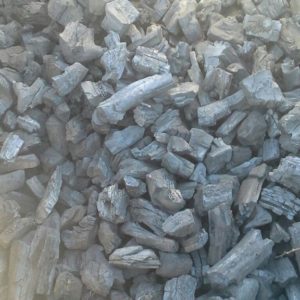Charcoal
What is Charcoal?
It is a lightweight black carbon residue produced by removing water and other volatile constituents from animal and plant materials. It is usually produced by slow pyrolysis — the heating of wood or other organic materials in the absence of oxygen. This process is called charcoal burning.
It is an impure form of graphitic carbon, obtained as a residue when carbonaceous material is partially burned, or heated with limited access of air. Coke, carbon black, and soot may be regarded as forms of charcoal; other forms often are designated by the name of the materials, such as wood, blood, bone, and so on, from which they are derived. It has been replaced by coke for reducing metal ores in blast furnaces and by natural gas as a source of carbon in making certain chemicals, but it is still employed in making black gunpowder and in case-hardening metals. Formerly, charcoal production from wood was an important source of acetone, methyl alcohol, and acetic acid, all of which are now produced from other raw materials.
Advantages of charcoal:
The advantage of burning it compared to burning wood is the absence of water and other components. This allows it to burn at higher temperatures, and give off very little smoke (regular wood gives off a good amount of steam, organic volatiles, and unburnt carbon particles — soot — in its smoke).
A porous black solid, consisting of an amorphous form of carbon, obtained as a residue when wood, bone, or other organic matter is heated in the absence of air.
Briquettes of charcoal used for barbecuing.
It is used for drawing.
Activated charcoal is a fine, odorless, black powder often used in emergency rooms to treat overdoses. Its toxin-absorbing properties have a wide range of medicinal and cosmetic uses, though none are scientifically proven.
Superheating natural sources of carbon, such as wood, produces activated charcoal. The black powder stops toxins from being absorbed in the stomach by binding to them. The body is unable to absorb charcoal, and so the toxins that bind to the charcoal leave the body in the feces.
Showing the single result


 +380 63 265 7682
+380 63 265 7682 info@europepellets.com
info@europepellets.com